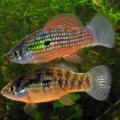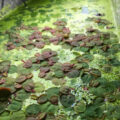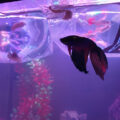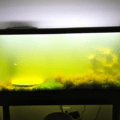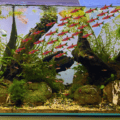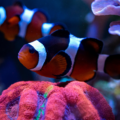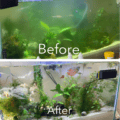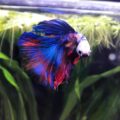The rare fast-swimming Pink-Tailed Chalceus fish is gaining popularity in the aquarium space. These essential maintenance practices for this variant of the Chalceus spp. will get help you get started!
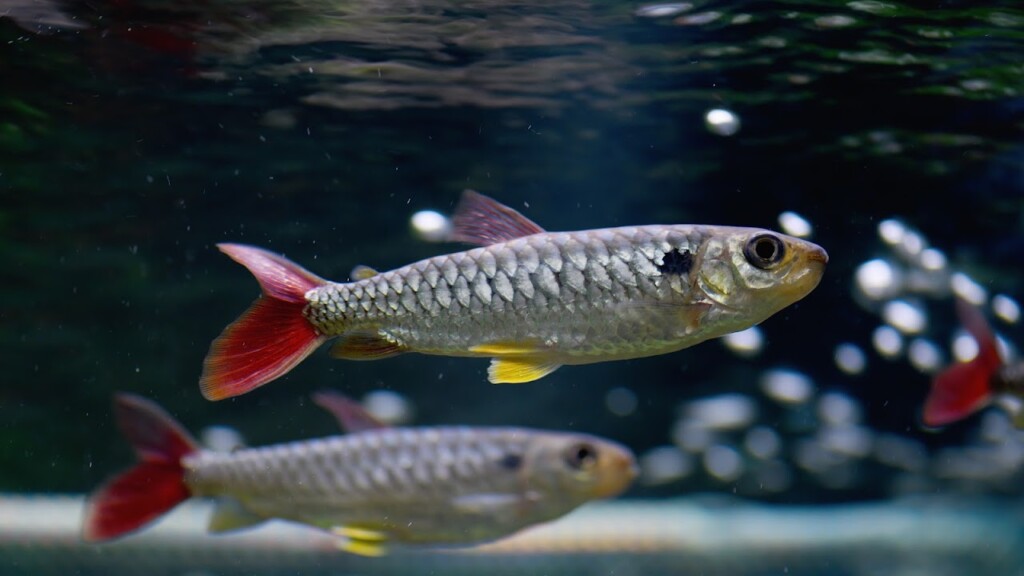
Introduction
Are you a fish enthusiast interested in watching an active surface-dwelling aquarium fish? Then, you should consider the Pink-Tailed Chalceus. It’s a torpedo-shaped species with an engaging personality and visually stunning metallic appearance.
This guide dives deep into the Pink-tailed shark fish profile by analyzing its activity level, surface-dwelling nature, and appeal to advanced hobbyists seeking unique species.
If you’re ready for the challenging but exciting adventure of owning one of these fish, welcome to your Pink-Tailed Chalceus introduction.
Author’s Note: Check out our post on the 14 Small & Big Freshwater Pet Sharks for more Freshwater Home Aquarium compatible shark lookalikes.
Natural Habitat and Wild Behavior
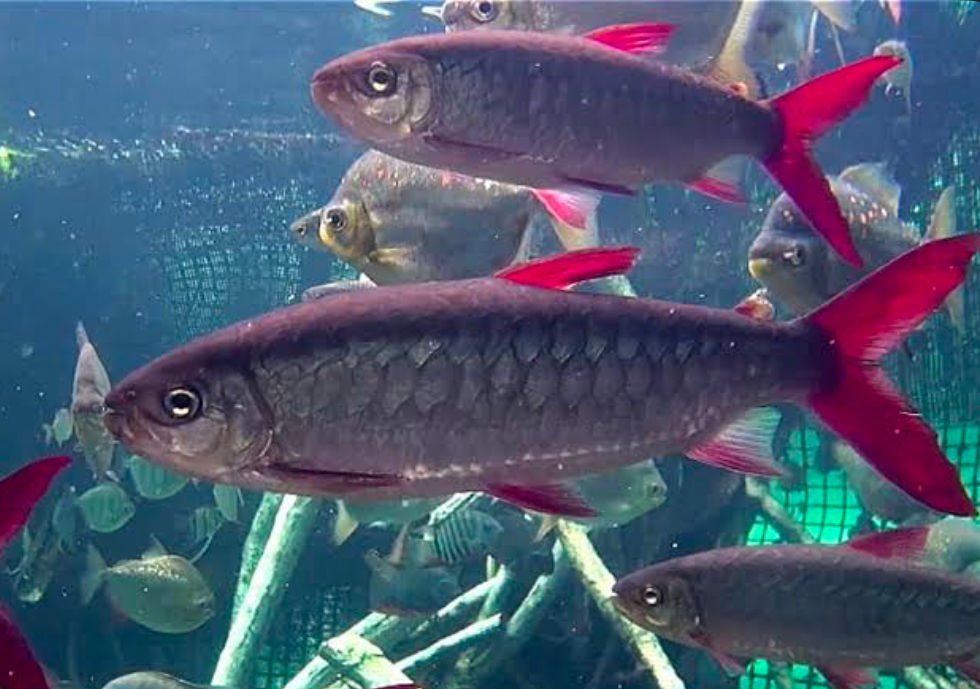
Chalceus species are a South American river fish from the fast-flowing Orinoco and Amazon basins. Because of their natural habitat, Pink-tailed Chalceus are fast-swimming freshwater fish.
Other Chalceus spp. habitat behaviors you’d notice include surface swimming along the upper levels of the water column, natural schooling instincts, and skittishness in small groups or cramped spaces.
To avoid that, here’s a perfect aquarium setup guide.
Aquarium Setup for Pink-Tailed Chalceus: Space and Security First
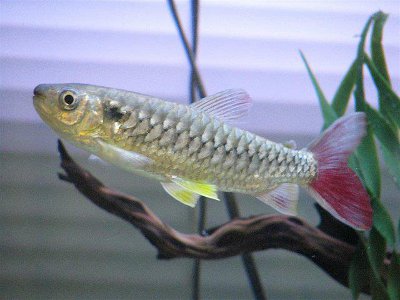
So, while designing a large freshwater fish aquarium setup for your Pink-Tailed Chalceus, you must also consider their peculiar habits of surface swimming and hyperactivity.
These Pink-Tailed Chalceus tank requirements will ensure your pets live a healthy and comfortable life.
Tank Size
To design a comfortable upper-level swimming fish habitat for a small group of Pink-tailed Chalceus, you need a tank with at least 75 gallons of water. Choose a wide horizontal tank with a tight-fitted lid to prevent them from jumping out.
Water Conditions
Set perfect water conditions based on your pet’s natural habitat to give them a feel of home and ensure proper development despite being domesticated. Set the water current to a strong flow to encourage their active swimming nature.
| Temperature | 74 – 82°F |
| pH | 6.0 – 7.5 |
Test the water periodically to ensure stability and optimal quality. Without maintaining proper water parameters, the tank’s water quality can degrade, which can cause a wide range of issues from cloudy aquarium water to illness and mass die off.
Décor Tips
Pink-Tailed Chalceus hates crowded spaces, so leave open swimming areas within your tank decor. Opt for floating plants instead of rooted ones to reduce skittishness and provide safety from jumping out.
Physical Description and Distinctive Traits
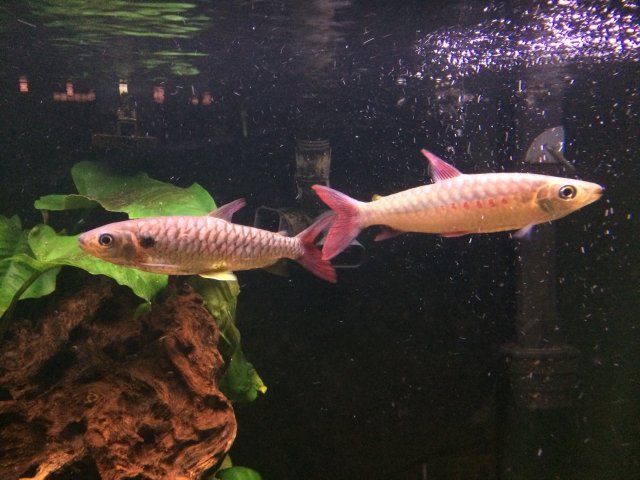
For easy identification, let’s examine the Pink-Tailed Chalceus fish’s appearance with a microscope. We’ll analyze its reflective metallic scales, torpedo body shape, pink to reddish tail, fin transparency, and reflective scales.
Color Pattern
First up in this analysis is the Chalceus fish’s coloration. This fish has a shimmering silver sheen body with a bold pink tail fin, which earned it the name “Pink-Tailed Chalceus.”
However, its pectoral fins are transparent, and the silvery scales reflect multiple colors depending on the tank’s lighting and environmental enrichment.
Unique Traits
Despite being a small fish of only 10 inches in maturity, the Pink-Tailed Chalceus fish is a strong jumper! This reflective-scale aquarium species flaunts its beauty for its owners while swimming along the surface.
Now that you can pick out this freshwater fish with a pink tail in a group, it’s time to feed them.
Feeding Routine and Dietary Needs
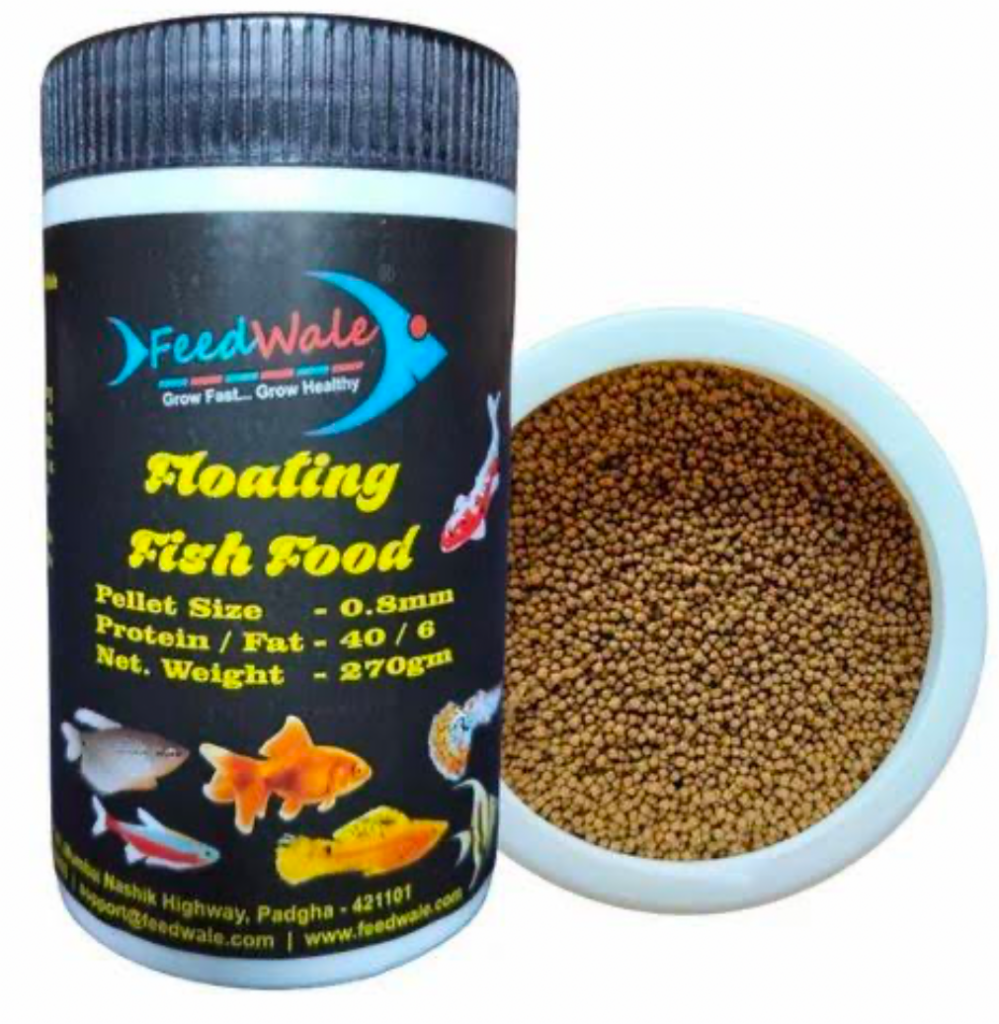
Provide a top-feeding carnivorous fish diet for your Pink-Tailed Chaleceus. So, even though they eat protein-rich food, you must follow a specific Pink-Tailed Chalceus feeding guide to ensure nourishment.
Diet Suggestions
Get them floating pellets to match their surface-feeding habit as their daily staple. Then, supplement the commercial pellets with insect-based flakes, freeze-dried krill, and small crustaceans for varied nutrients.
Author’s Note: For more on feeding your aquatic pets check out The Ultimate Guide to Fish Food: Pros and Cons & Best Choices!
Feeding Strategy
Here are some more Chalceus spp. nutrition tips to match their active lifestyle and natural habits:
- Avoid sinking foods
- Feed them with lights on to encourage them to find hidden foods
- Feed them twice daily but in small portions.
- Avoid housing them with species that’ll compete for resources.
Compatible Tank Mates for a Balanced Community
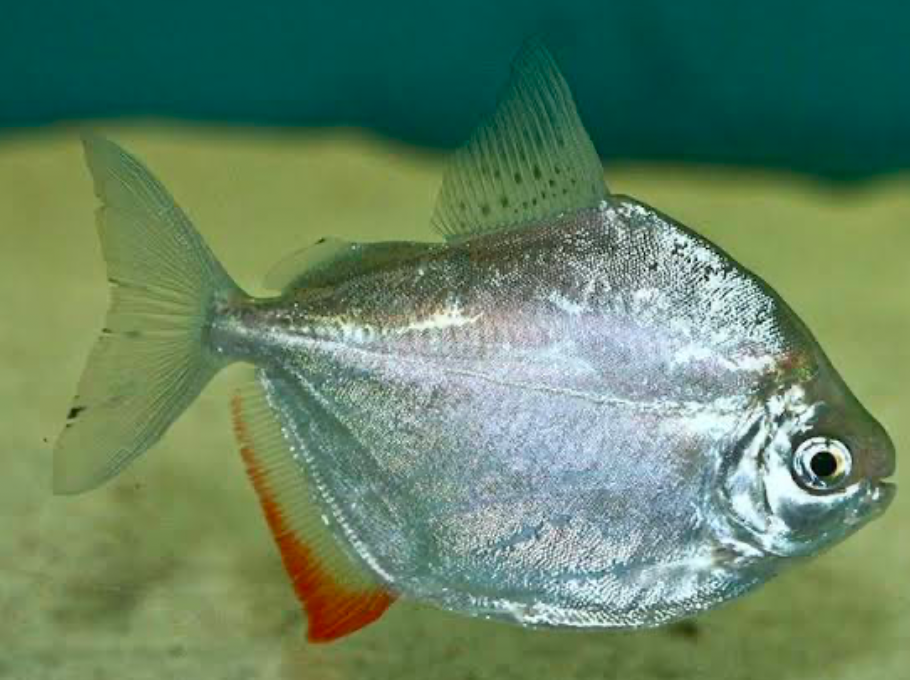
If you want a mixed community, a large, peaceful freshwater fish pairing will create a harmonious aquarium. Suitable companions are fast, mid-to-large-sized, and non-aggressive.
Compatible Species
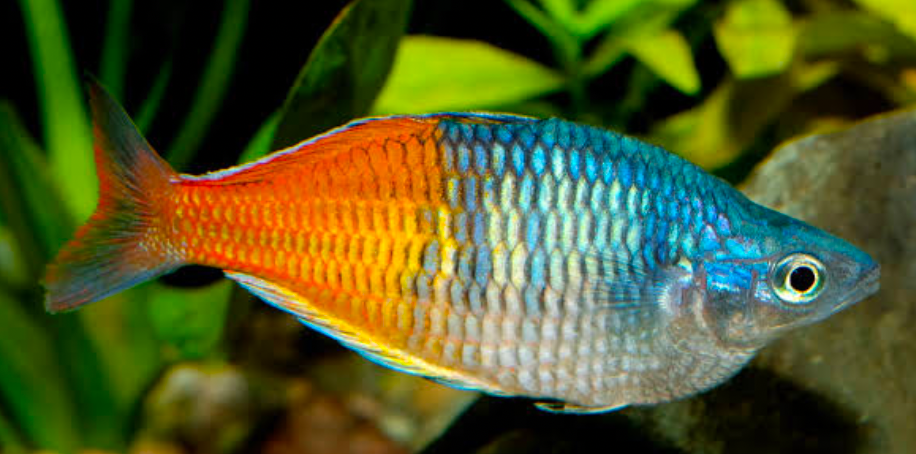
Silver dollars, rainbowfish, and larger barbs are suitable tank mates for active fish like Pink-Tailed Chalceus.
Tankmate Species to Avoid
Avoid slow or timid fish and very small species that your Pink-Tailed Chalceus will view as food, such as Bettas, guppies, small tetras, and bottom-dwellers with long fins.
You may reproduce this species after carefully curating your Chalceus community tank options.
Breeding and Reproduction Notes
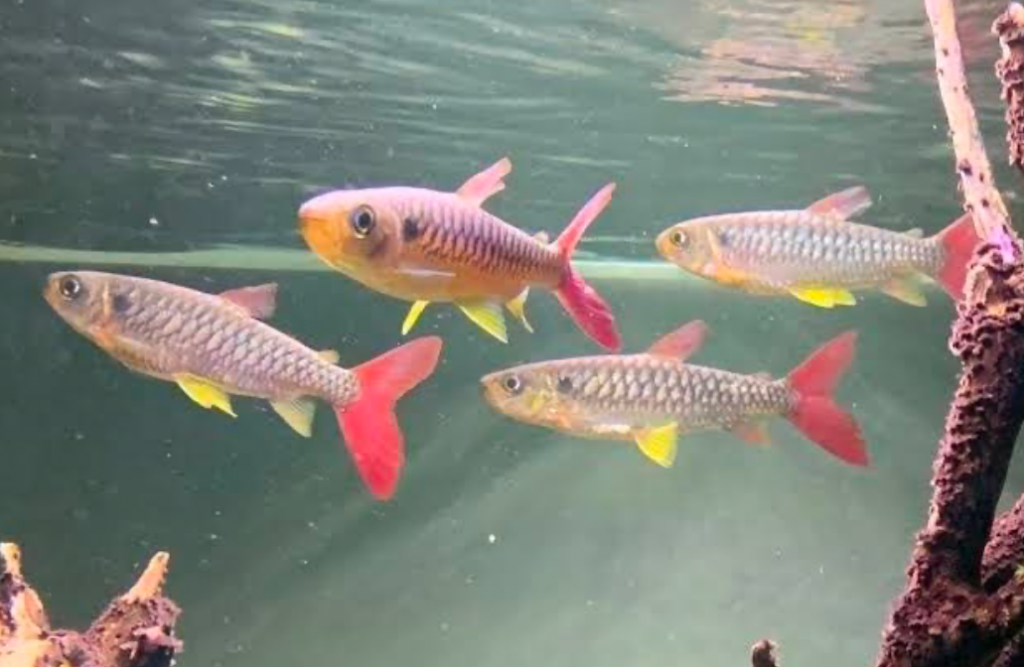
Warning!!! Pink-tailed Chalceus is a rare aquarium breeding species, so there’s limited documentation available. However, here is some general knowledge and facts about Chalceus fish breeding to help you if you find yourself in such a situation.
Breeding Behavior
Over the years, expert fish keepers documented the Pink-Tailed Chalceus as an egg-laying freshwater fish. It supposedly scatters its eggs in the wild and provides no parental care.
Captive Breeding
Because of the limited information available on breeding this species, it’s rare for fish keepers to reproduce them in captivity. Instead, they catch them in the wild and raise them in specially designed-habitats.
Health Management and Care Tips
These Pink-Tailed Chalceus health tips help you identify common health issues, their triggers, prevention, and treatments.
Common Issues
Pink-tailed Chalceus are sensitive to fluctuating water conditions and prone to stress-related illness, which can result from loneliness, poor environments, mismanagement, and incompatible tank mates.
This fish can get fin damage from jumping in harmful environments. They may also experience stress-induced fading and ich from contaminated water.
In case of symptoms of illness, always quarantine the affected fish first. Then improve the living conditions to optimal levels before administering medication prescribed by a vet.
Preventative Measures
Use aquarium stress prevention measures, such as securing the tank with a tight yet breathable tank lid and consistently testing for stable water parameters.
Perform weekly water changes and careful acclimation for your pets to get used to their new habitat.
With these freshwater jumper fish care practices, you can guarantee your pet’s health and extend its lifespan.
Lifespan and Commitment
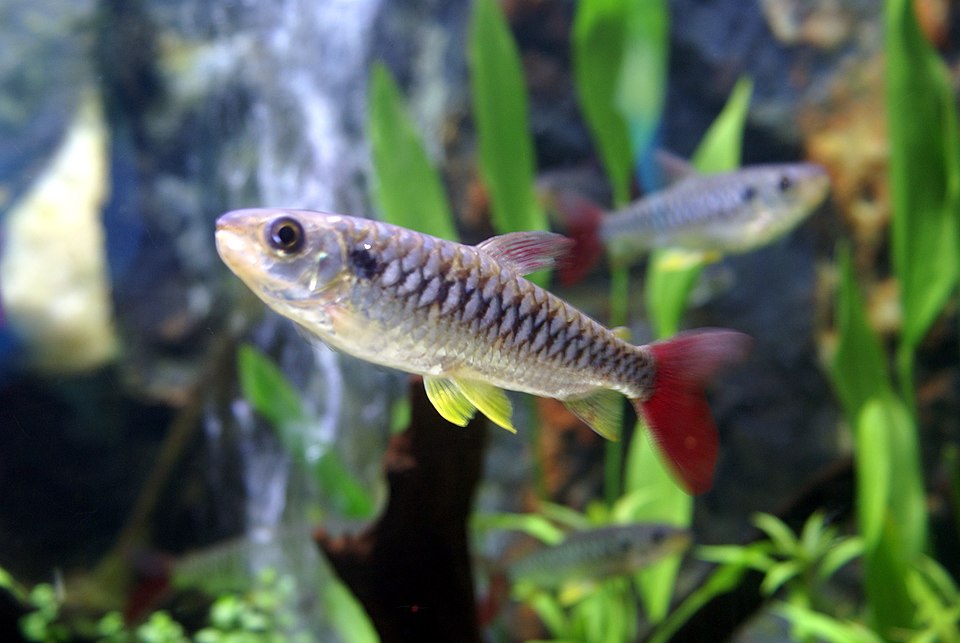
A Chalceus fish lifespan can last 5–7 years with good care. So, prepare your habitat for their size, speed, and jumping behavior when planning long-term care, even if you’re fostering them for a short period.
Long-Term Considerations
This torpedo-shaped fish is an ideal schooling fish for large aquariums if you want a mixed community with other species.
As part of long-term care for active fish, it’s best to keep Pink-Tailed Chalceus in groups of 4 or more to reduce nervousness.
Growth Expectation
If pink-tailed Chalceus eats properly and has enough room to grow, it can reach 8–10 inches in adulthood.
So, scroll to the top for specific care practices, including dietary and habitat restrictions.
Conclusion: A Dynamic Showpiece for Experienced Keepers
That’s all on this Pink-Tailed Chalceus aquarium guide. If you came here for info on this advanced freshwater fish species, you’re ready to add at least fish of them to your large tank.
Let’s review their appeal once more in case you’re still unsure. Pink-Tailed Chalceus is –
- Rare
- Visually Striking
- Energetic
I recommend leaving this exotic community tank fish to advanced aquarists with the space and experience to match.

